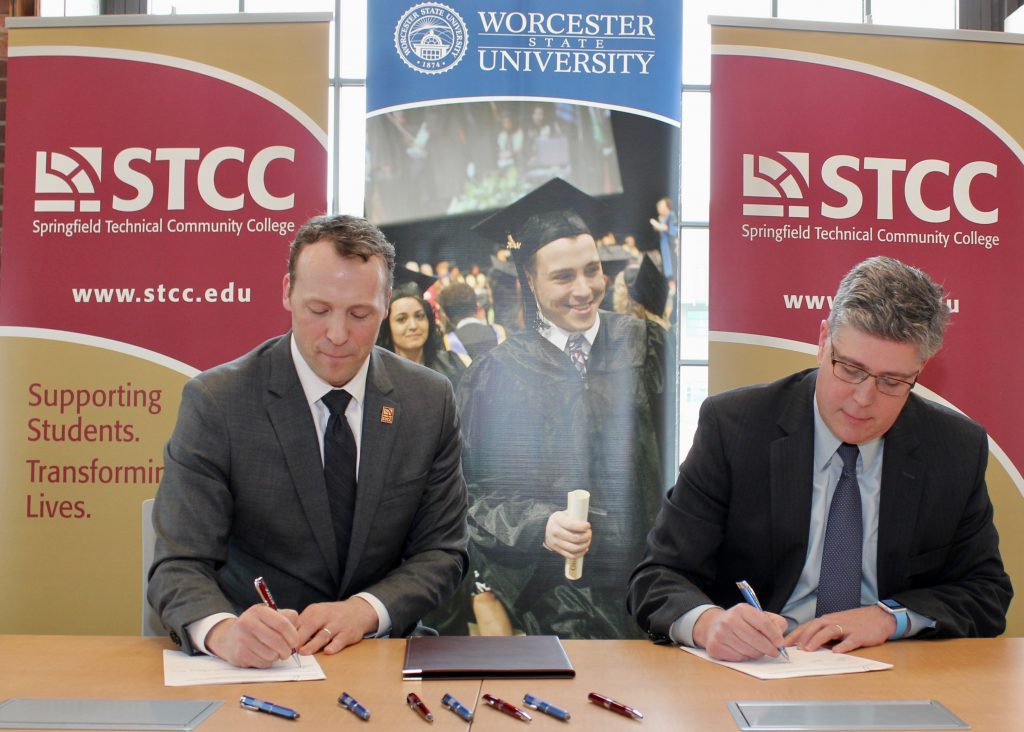By Darren Johnson
Campus News
If you are just a first-year student, stay put and come back for a second year at community college this summer and/or fall.
But if you are a community college student nearing or post graduation, you have a lot to consider. Should you immediately go into the workforce with the two-year degree, or go on to a four-year college to further cement your credentials?
Of course, answering this question is complicated. There are some jobs that only require a two-year degree that may pay better than some jobs that require a four-year degree or more. That’s why so many people who already have bachelor’s degrees are now going back to two-year schools: to learn practical skills.
Here are the five assessments you should perform as you consider parlaying your two-year degree into either a career or a bachelor’s:
Step 1: Assess your two-year degree. Is the two-year degree in a field that is in high demand? Did you test the job market during the spring and summer, before your junior year this fall at a four-year college? If you couldn’t find a career-leading job in these months, the best move may be to get more training and start your junior year this September. Weigh your options.
“With college costs continuing to skyrocket, the traditional bias that many executives have regarding four-year degrees is starting to recede,” said Joe Weinlick, Senior Vice President of Marketing for Beyond.com, a career networking company. “Companies are more interested in whether they can bring in the right talent. If you have a skill that is in-demand, such as technology, you may be able to get a well-paying job right away. But in some fields, such as nursing, an advanced degree might be required to work in certain hospitals.”
Step 2: Assess yourself. To get through your two-year college, you probably worked a job that only required a high school degree or less, while also studying. Can you take a more serious job with your associate’s degree in hand, and then take night, weekend or online courses at a four-year college simultaneously? If so, get the career now — and go to a four-year college at the same time, as a non-traditional student.
“If a bachelor’s degree is important to your chosen career path, then don’t put it off. But, you don’t necessarily need to choose between working and a degree,” Weinlick added. “An increasing number of colleges are offering online degrees in many subjects. It’s hard work, but it can be done.”
Step 3: Assess your financial aid and GPA. Did it take you four years to get a two-year degree? Then you may be running out of financial aid allowance. Is your GPA good enough to not only get you into the four-year college, but also get you added scholarship money to make up for the financial aid shortfall? If not, then you may be forced to prove yourself on the job market first.
Weinlick added: “After several years of a down economy, the job market is finally heating up. This means that recruiters are competing to find talent. If you aren’t sure what to do, this is a great time to test the job market. If you find that you can get a job that launches you on your career, then you can immediately start to gain valuable experience. You can always choose to get your degree later.”
 Step 4: Assess the courses you have taken thus far. Were they “career” courses or “transfer” courses?
Step 4: Assess the courses you have taken thus far. Were they “career” courses or “transfer” courses?
“There is a lot to consider here. For instance, did the student have a specific area of concentration or was he or she simply focused on meeting prerequisite courses?” asked Trey Wright, who heads up the higher education practice for Kaye Bassman International, a large national recruiter.
“Community Colleges are closely tied to industries within the communities they serve. Students find a number of degree plans tied directly to jobs within those industries. If a student has concentrated their studies in one of these directions, then exploring the job market is probably a great idea. If they have followed the prerequisite path, they will find that their job options look very similar to what they would have experience had they sought employment after graduating high school. These students should strongly consider transferring to a four-year institution and choose a degree plan geared toward a specific skill-set.”
Step 5: Assess your long-term interests. Sure, getting a job that pays, say, $40,000 a year now with a two-year degree may be better than actually paying two more years of tuition, but will an eventual bachelor’s bring in more money over time? It is hard to imagine 10 or 20 years from now, but will a bachelor’s offer you more flexibility down the road, say if you want to move into management some day?
“With the wage boost that comes from a bachelor’s degree vs. associate’s, and the obstacles that can develop returning to campus as time goes by, the answer is clearly to continue into a four-year program,” said said Matt Pittinksy, former Blackboard co-founder and current founder of Parchment, a credential management system that allows learners and institutions to manage academic credentials online. “Doing so provides more time in the labor market at the higher wage rate among other benefits. The key question is choice of major and selection of four-year program from a credit transfer perspective.”







Facebook Comments